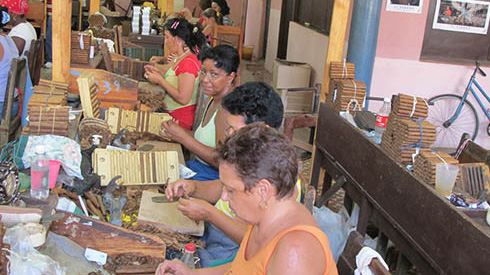Cayo Coco retains an idyllic, almost remote feel. The islands used to be completely uninhabited until the Cuban government decided to develop them as a vacation destination in the early 1990s. Cubans who live nearby and work at the resorts bring local culture with them that you can both see and taste.
Cuba has long been a meeting point of African and Spanish cultures. The two cultures come together most notably in salsa, a dance form born in Cuba that is now practised and performed around the world. You'll find salsa dancing in clubs and discotheques across Cayo Coco and Cayo Guillermo, often led by residents of the nearby town of Moròn.
Solo dancers form a line for the salsa suelta or the casino ruedo – forms of the dance that don't require a partner – and sometimes borrow moves from hip-hop, jazz and rumba. For partner dances (the most common form of salsa), dancers use turns, changes in direction and plenty of hip movement. They also keep a fast pace, moving to music that ranges as fast as 250 beats per minute.
Most resorts on Cayo Coco and Cayo Guillermo include restaurants with Cuban cuisine, a blend of Spanish, African and Caribbean culinary traditions. These restaurants are great places to get acquainted with the local foods that residents of the nearby towns cook.
Most fruits and vegetables in Cuba are organic and pork is the most popular meat. Try some traditional Cuban congri (a pleasing mixture of white rice and red or black beans), fried plantains and traditional Cuban pork roast topped with sweetened papaya for dessert.
Although Cuba is an island with a very long history, its culture is largely been shaped by the Cuban Revolution of 1959. After overthrowing the government of Fulgencio Batista, the revolution ushered in more than five decades of communist party rule, most of it under Fidel Castro. He officially handed the reins of power to his younger brother, Raul, in 2008.
The revolution and the American trade embargo that followed have led to an almost-complete absence of American brands in Cuba. Driving in this country can sometimes feel like a trip back in time. Most noticeable is the fact that it's nearly impossible to find Fords and Chryslers on Cuba's roadways—at least anything built after 1961. Cuban car owners have kept a large number of American classics running, carefully maintaining their engines and even making their own parts for repairs.
Tobacco remains one of the country's largest industries, with cigars being one of Cuba's biggest exports. Cuban cigar rollers, known as torcedores, are highly respected within the country and regarded by international aficionados to be the most skilled in the world. While some cigars are made by machine, many, including those made in the factory in Ciego de Avila, are still created using the time-honoured, hand-rolled techniques.



















